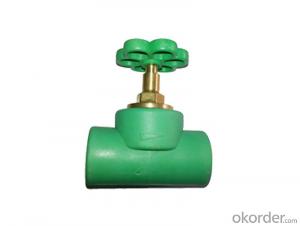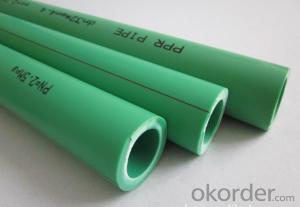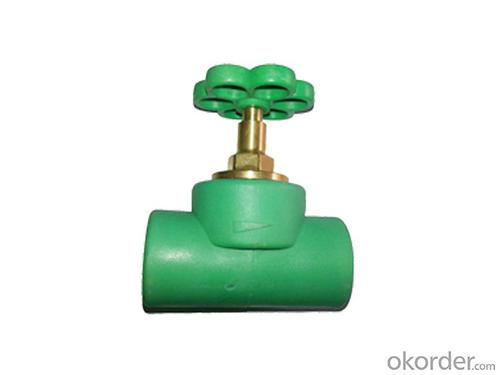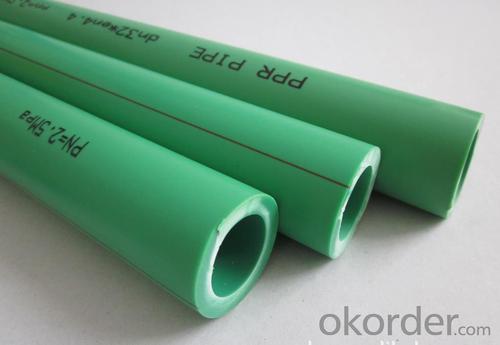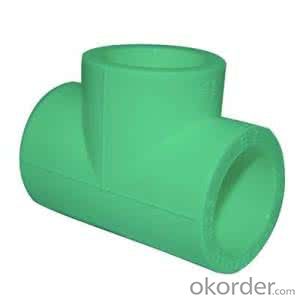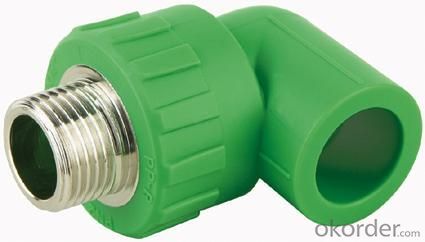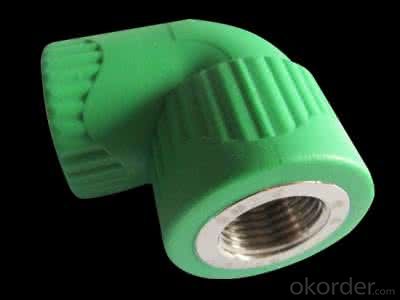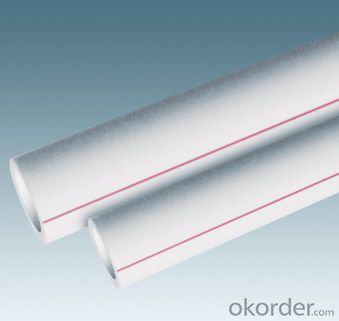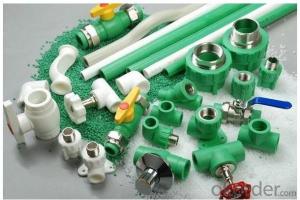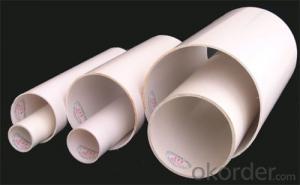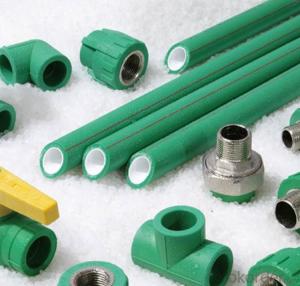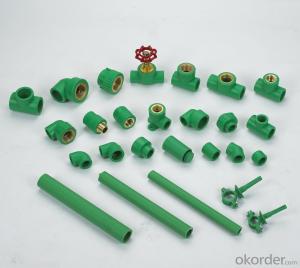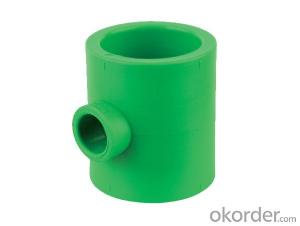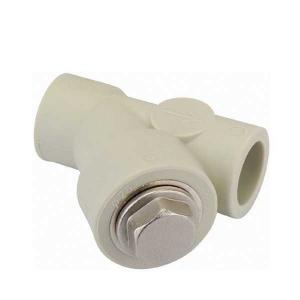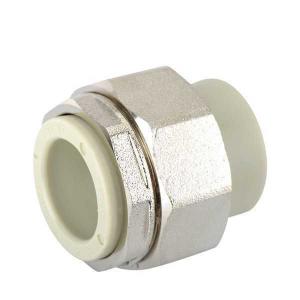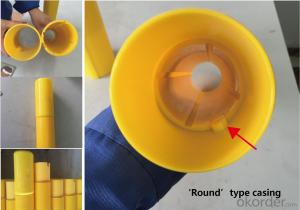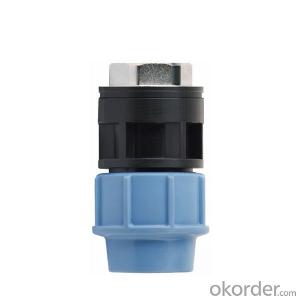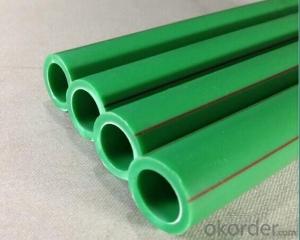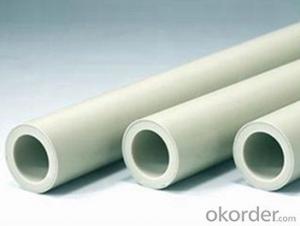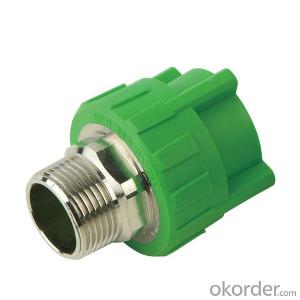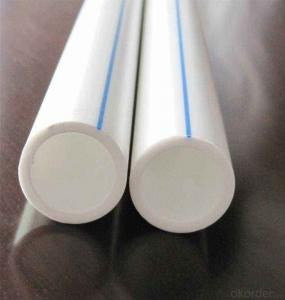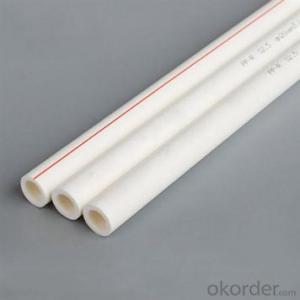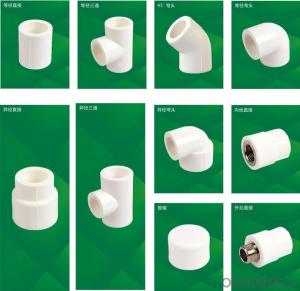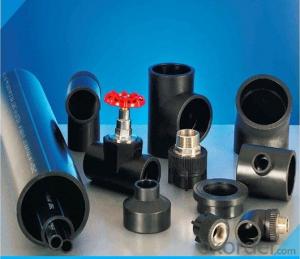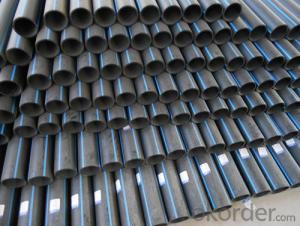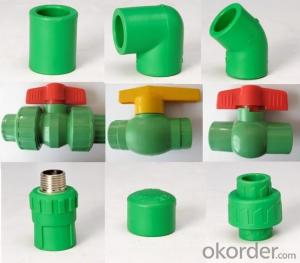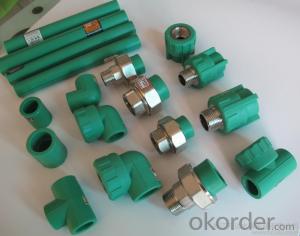Push on Plastic Pipe Fittings - New DIN Standard PPR Pipe Fittings for Hot and Cold Drinking Water Supply
- Loading Port:
- Tianjin
- Payment Terms:
- TT OR LC
- Min Order Qty:
- 1500 set
- Supply Capability:
- 30000 set/month
OKorder Service Pledge
OKorder Financial Service
You Might Also Like
Specification
PPR pipe fittings
1.It is used in Industrial fields and Agriculture fields
2.Beauty appearance.
3.Thermal insulation and energy saving.
4.Easy installation
5.Excellent heat resistance and pressure resistance
Our advantages
(1) High Temperature Resistance: the maximum sustained working temperature is up to 70 Degrees Celsius, the maximum transient temperature is up to 95 Degrees Celsius.
(2) Heat Preservation: low thermal conductivity which is only 1/1500 of brass pipe, and 1/250 of steel pipe.
(3) Corrosion Resistant: resist chemical matters or electron chemical corrosion.
(4) Lower Installation Costs: light weight and ease of installation can reduce installation costs by as much as 50% over metal piping system.
(5) Higher Flow Capacity: smooth interior walls result in lower pressure loss and higher volume than metal pipes.
(6) Long Life: more than 50 years under normal conditions.
(7) Recycled and Environment-friendly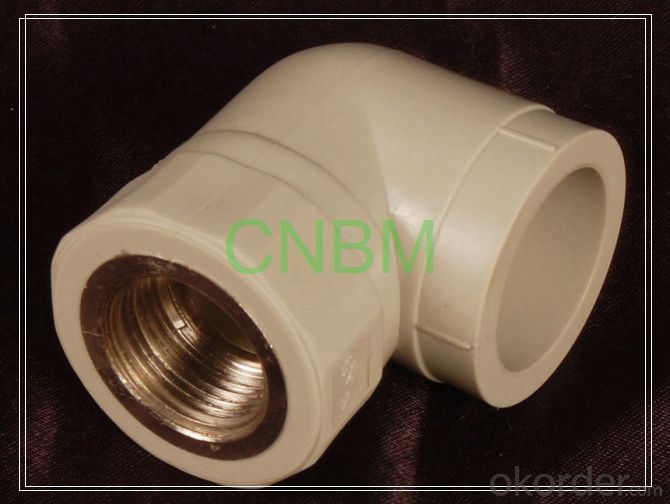
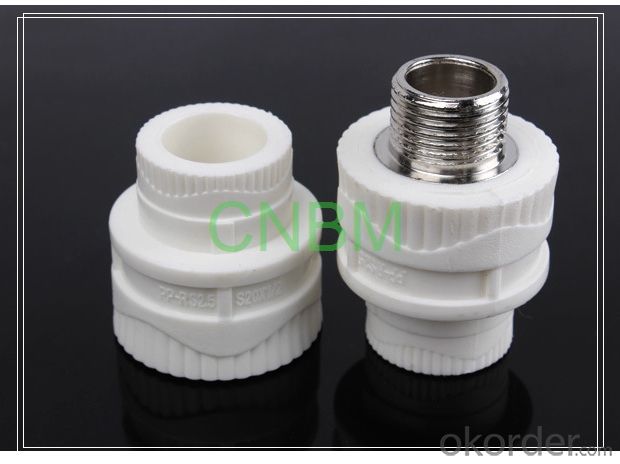
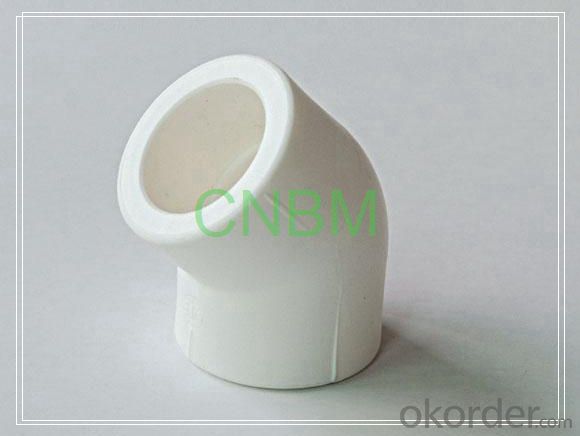
PPR pipe and fitting size
1.25MPa | 1.6MPa | 2.0MPa | 2.5MPa | |
Outer | Wall | Wall | Wall | Wall |
Diameter | Thickness | Thickness | Thickness | Thickness |
dn(mm) | en (mm) | en (mm) | en (mm) | en (mm) |
20 | 2.0 | 2.3 | 2.8 | 3.4 |
25 | 2.3 | 2.8 | 3.5 | 4.2 |
32 | 2.9 | 3.6 | 4.4 | 5.4 |
40 | 3.7 | 4.5 | 5.5 | 6.7 |
50 | 4.6 | 5.6 | 6.9 | 8.3 |
63 | 5.8 | 7.1 | 8.6 | 10.5 |
75 | 6.8 | 8.4 | 10.1 | 12.5 |
90 | 8.2 | 10.1 | 12.3 | 15.0 |
110 | 10 | 12.3 | 15.1 | 18.3 |
160 | 14.6 | 17.9 | 21.9 | 26.6 |
- Q: Are plastic pipe fittings resistant to thermal expansion and contraction?
- Yes, plastic pipe fittings are generally resistant to thermal expansion and contraction. Unlike metal fittings, plastic materials have a greater ability to expand and contract without undergoing significant dimensional changes or structural damage. Additionally, plastic pipes and fittings have lower thermal conductivity, which further helps in minimizing the effects of temperature fluctuations. However, it's important to consider the specific type of plastic used in the fittings, as different materials may exhibit varying degrees of resistance to thermal expansion and contraction.
- Q: Are plastic pipe fittings compatible with different types of piping materials?
- Yes, plastic pipe fittings are compatible with different types of piping materials. Plastic fittings are designed to connect and adapt to various piping systems, including PVC, CPVC, PEX, and polyethylene pipes. These fittings provide a reliable and flexible solution for connecting and transitioning between different pipe materials.
- Q: Can plastic pipe fittings be used for fuel transfer systems?
- No, plastic pipe fittings are generally not recommended for use in fuel transfer systems due to their potential to degrade or become brittle when exposed to certain fuels, leading to leaks or failures. It is advisable to use fittings specifically designed and approved for fuel transfer applications, such as those made from materials like brass or steel.
- Q: Are plastic pipe fittings suitable for use in breweries and distilleries?
- Yes, plastic pipe fittings can be suitable for use in breweries and distilleries. However, it is important to ensure that the plastic materials used are specifically designed and approved for contact with food and beverages. Additionally, regular maintenance and proper cleaning procedures should be followed to ensure the integrity and safety of the fittings in these environments.
- Q: Are plastic pipe fittings more affordable than metal pipe fittings?
- Yes, plastic pipe fittings are generally more affordable than metal pipe fittings.
- Q: Are plastic pipe fittings resistant to hydrocarbons?
- Yes, plastic pipe fittings are generally resistant to hydrocarbons. They are made from materials like PVC or polyethylene, which have good chemical resistance properties and can withstand exposure to hydrocarbons without degrading or corroding. However, it is important to consider the specific type of plastic material used in the fittings and their compatibility with the particular hydrocarbon substance being transported.
- Q: How do you remove plastic pipe fittings?
- To remove plastic pipe fittings, you can follow these steps: 1. First, turn off the water supply to the pipe you are working on. This will prevent any leaks or water damage during the removal process. 2. Use a pair of pliers or a wrench to loosen the fitting. Grip the fitting firmly and rotate it counterclockwise to loosen it. If the fitting is stuck or too tight, you can use a pipe wrench or adjustable spanner for more leverage. 3. Once the fitting is sufficiently loosened, you can try pulling it straight off the pipe. If it doesn't come off easily, you can use a pipe cutter or hacksaw to carefully cut the plastic pipe just above the fitting. This will allow you to remove the fitting without damaging the rest of the pipe. 4. After removing the fitting, inspect the pipe for any damage or debris. Clean the pipe and fitting ends thoroughly before installing a new fitting. Remember to take necessary precautions, such as wearing gloves and eye protection, as you work with tools and potentially sharp edges.
- Q: Are plastic pipe fittings suitable for hot water systems?
- Yes, plastic pipe fittings are suitable for hot water systems. They are commonly used in plumbing applications and can withstand the high temperatures and pressures associated with hot water.
- Q: Are plastic pipe fittings resistant to extreme weather conditions?
- Yes, plastic pipe fittings are generally resistant to extreme weather conditions. They are designed to withstand a wide range of temperatures, from freezing cold to scorching heat. Additionally, they are often UV resistant, meaning they can withstand prolonged exposure to sunlight without degradation. However, it is important to note that the specific type and quality of plastic used in the fittings can affect their overall resistance, so it is advisable to consult the manufacturer's specifications for each specific fitting.
- Q: Can plastic pipe fittings be used for industrial ventilation systems?
- Yes, plastic pipe fittings can be used for industrial ventilation systems. Plastic fittings offer several advantages such as corrosion resistance, lightweight construction, and ease of installation. They are commonly used in various industrial applications, including ventilation systems, due to their durability and cost-effectiveness. However, it is important to ensure that the specific plastic material used is compatible with the air flow, temperature, and chemical conditions of the ventilation system to ensure optimal performance and safety.
Send your message to us
Push on Plastic Pipe Fittings - New DIN Standard PPR Pipe Fittings for Hot and Cold Drinking Water Supply
- Loading Port:
- Tianjin
- Payment Terms:
- TT OR LC
- Min Order Qty:
- 1500 set
- Supply Capability:
- 30000 set/month
OKorder Service Pledge
OKorder Financial Service
Similar products
Hot products
Hot Searches
